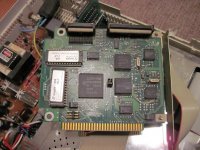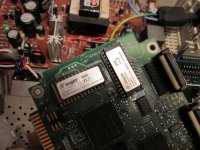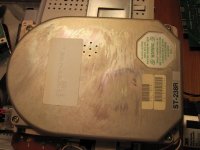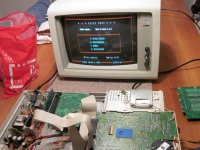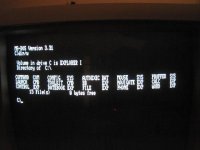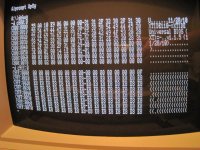Something that I created today to aid in the diagnosis of ROM related issues in the XT-IDE:
In [
this] ZIP file are two binary files for the XT-IDE card's ROM.
3TEST_S.BIN: Small - 512 bytes
3TEST_L.BIN: Large - 8 KB (the normal size for code in the XT-IDE V1)
The code within both does something simple. It displays a "3" character and then halts.
For example, flashing 3TEST_S.BIN into the XT-IDE V1 within my XT clone results in the screen that follows.
Above, the BIOS expansion ROM in my hard drive controller card was executed first and displayed the first line of text.
Then, the BIOS expansion ROM in my floppy drive controller card was executed and displayed the next two lines of text.
Then, the BIOS expansion ROM (containing 3TEST_S.BIN) in my XT-IDE card was executed, displayed the "3", and then halted the CPU.
So, in using 3TEST_S.BIN, the appearance of the "3" informs me that:
1. The computer does call BIOS expansion ROMs, and
2. Writing and reading of the first 512 bytes of the ROM is working.
And if required, visual comparison between the ROM contents (using DEBUG) and the 3TEST_S.BIN contents doesn't take long, because the code is only 512 bytes long.
If use of 3TEST_S.BIN results in the "3" being seen, then the next step would be see if the long version, the 8 KB sized 3TEST_L.BIN, also displays a "3".
Important
Once 3TEST is flashed into the XT-IDE's ROM, re-flashing the ROM requires a particular procedure:
1. Remove the ROM-enable jumper on the XT-IDE.
2. Power up computer.
3. Whilst the computer is running, replace the ROM-enable jumper.
4. Flash ROM.

